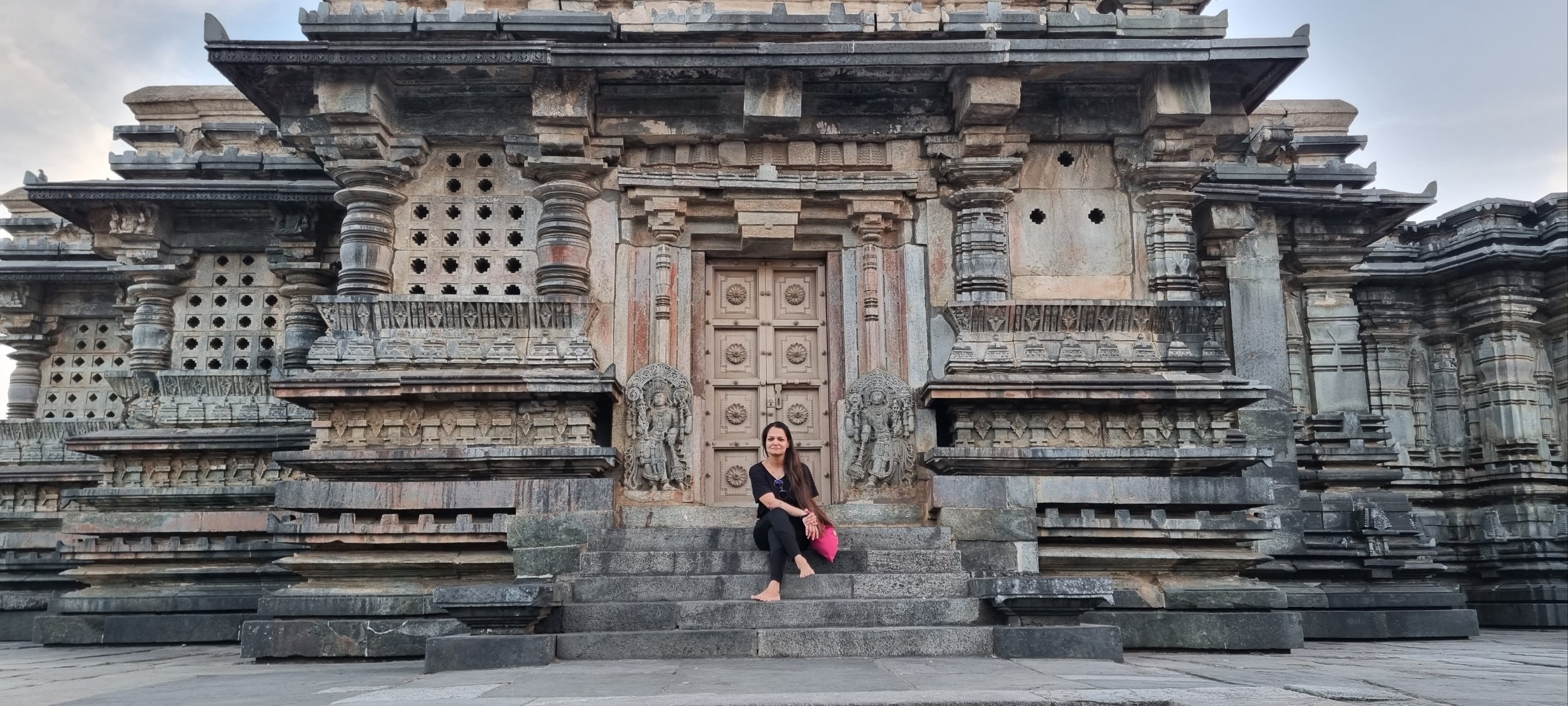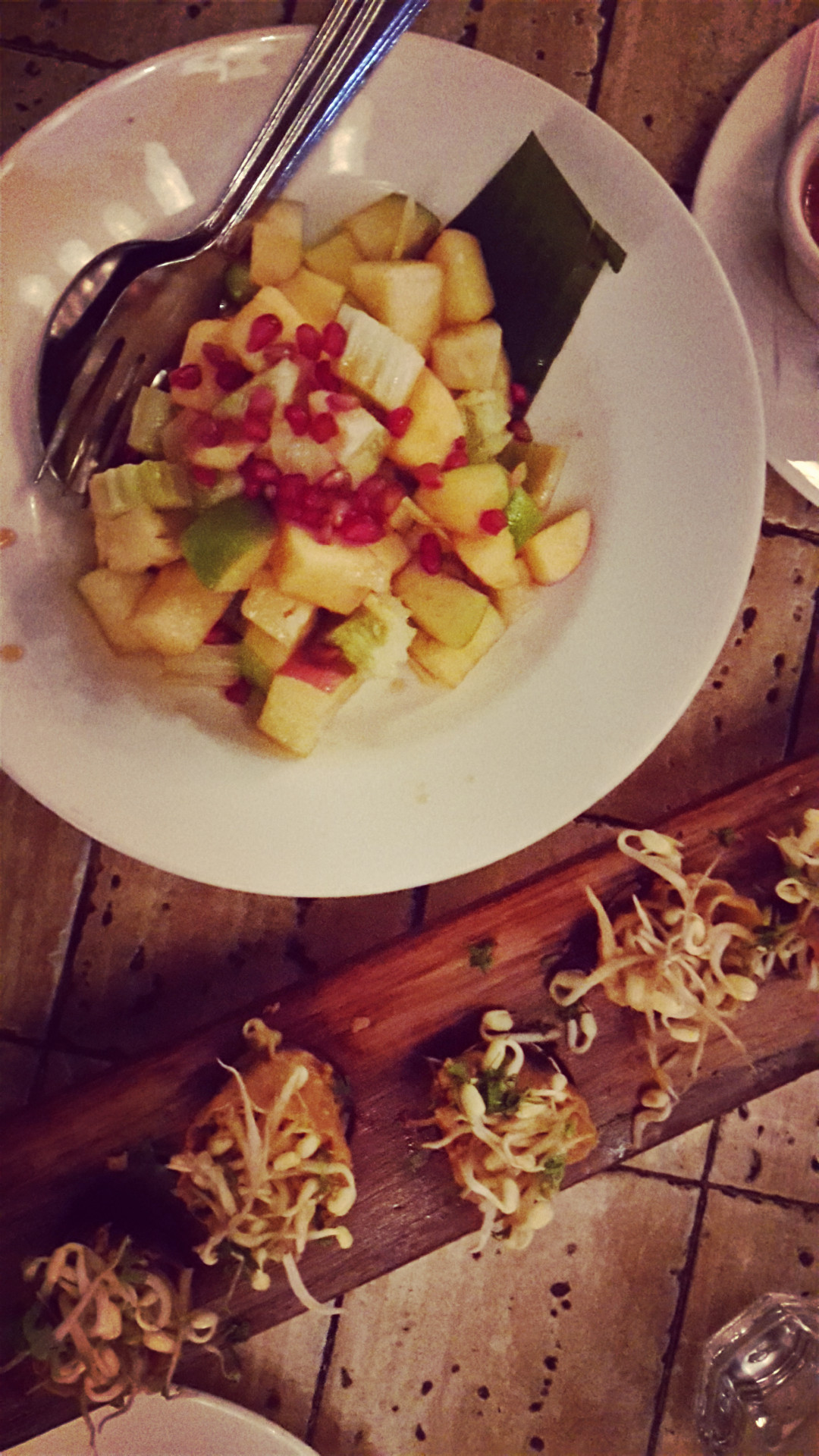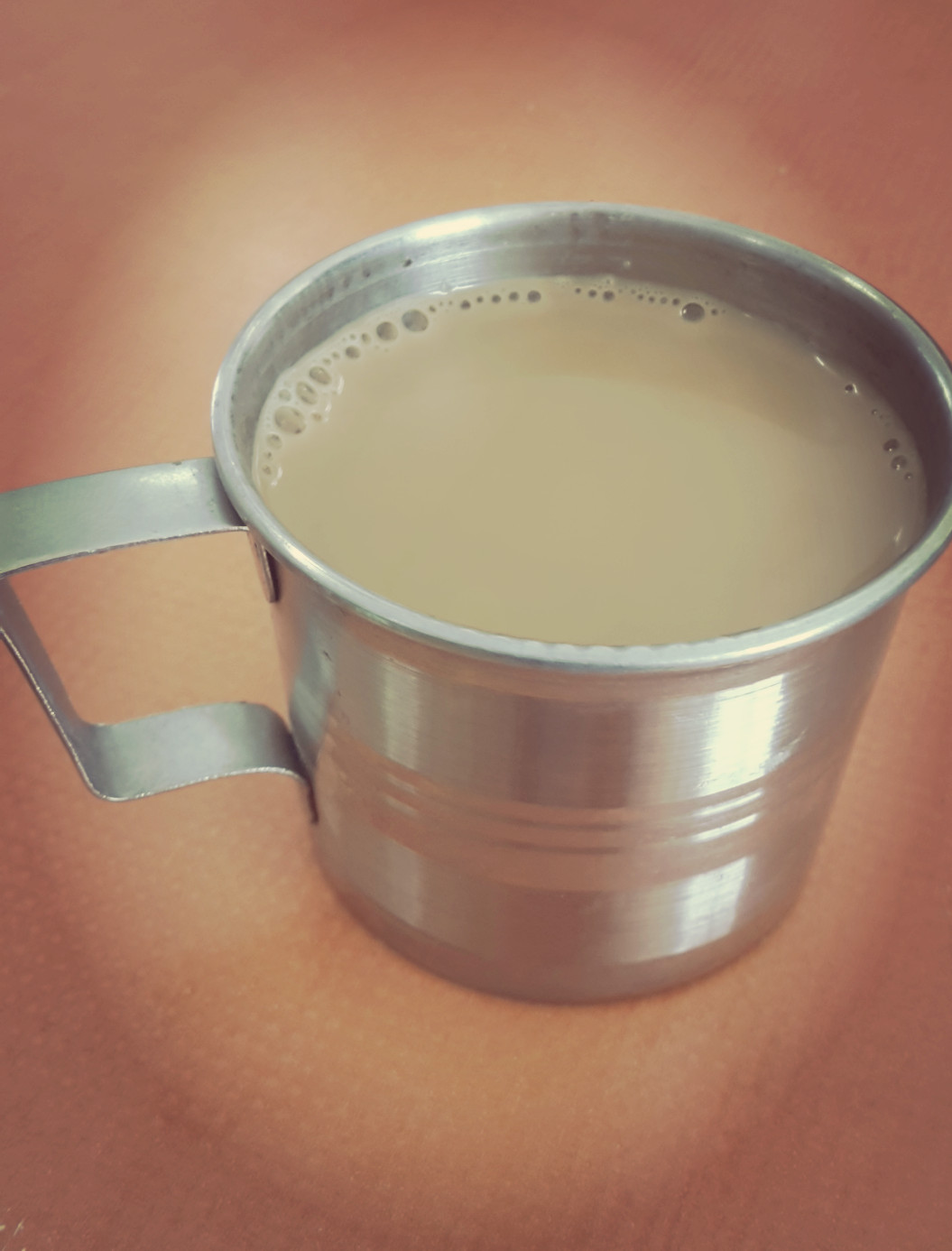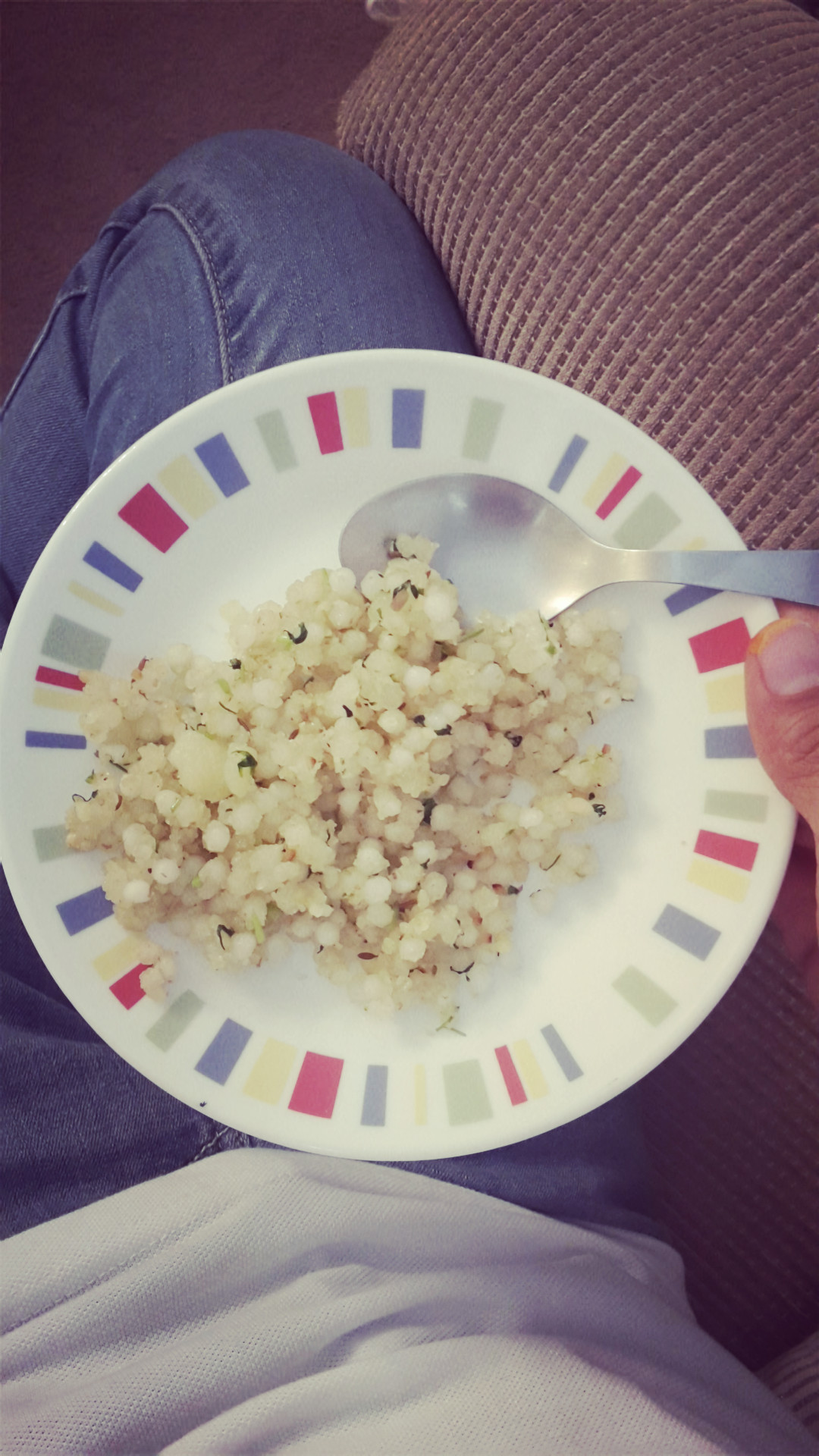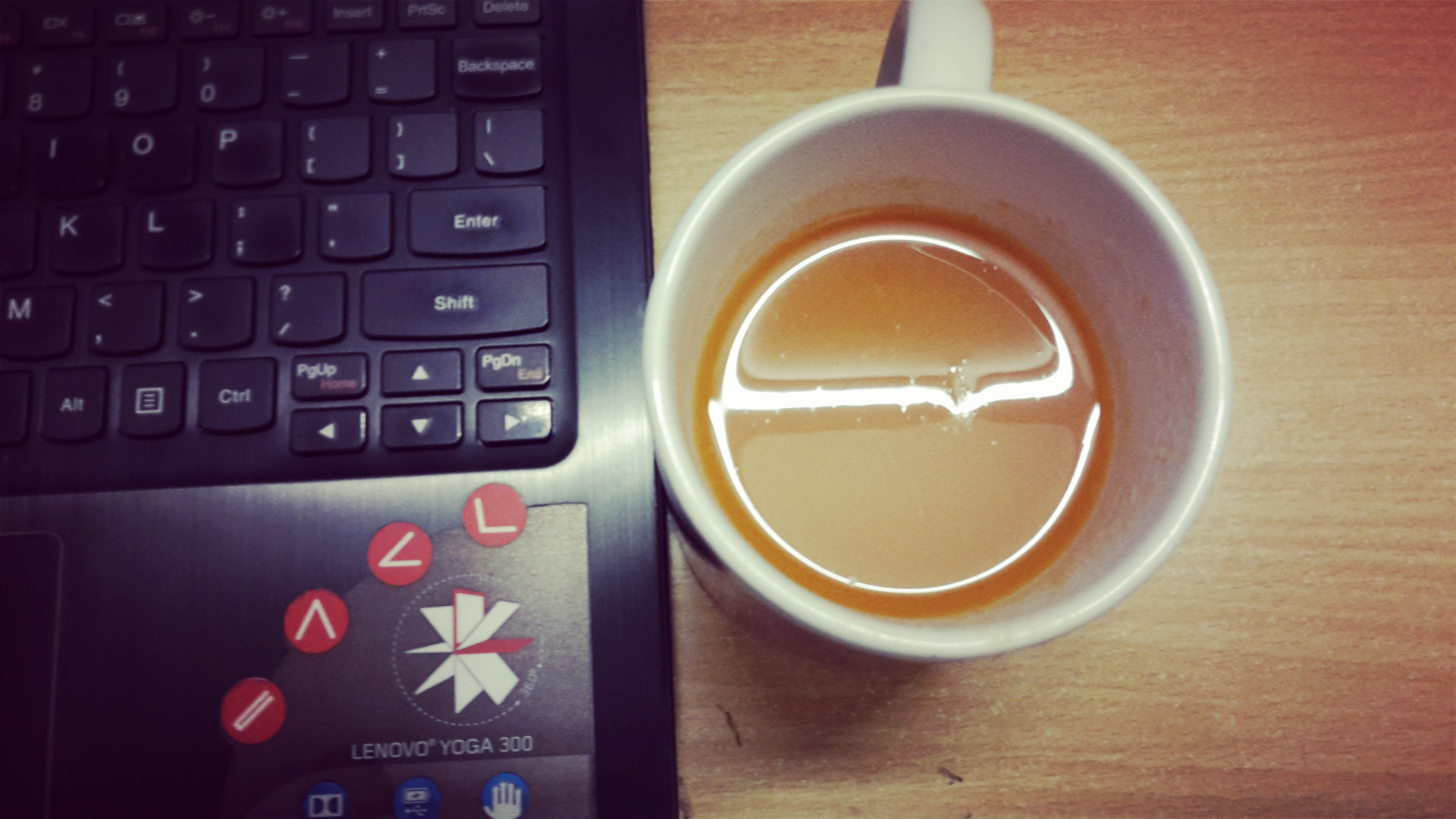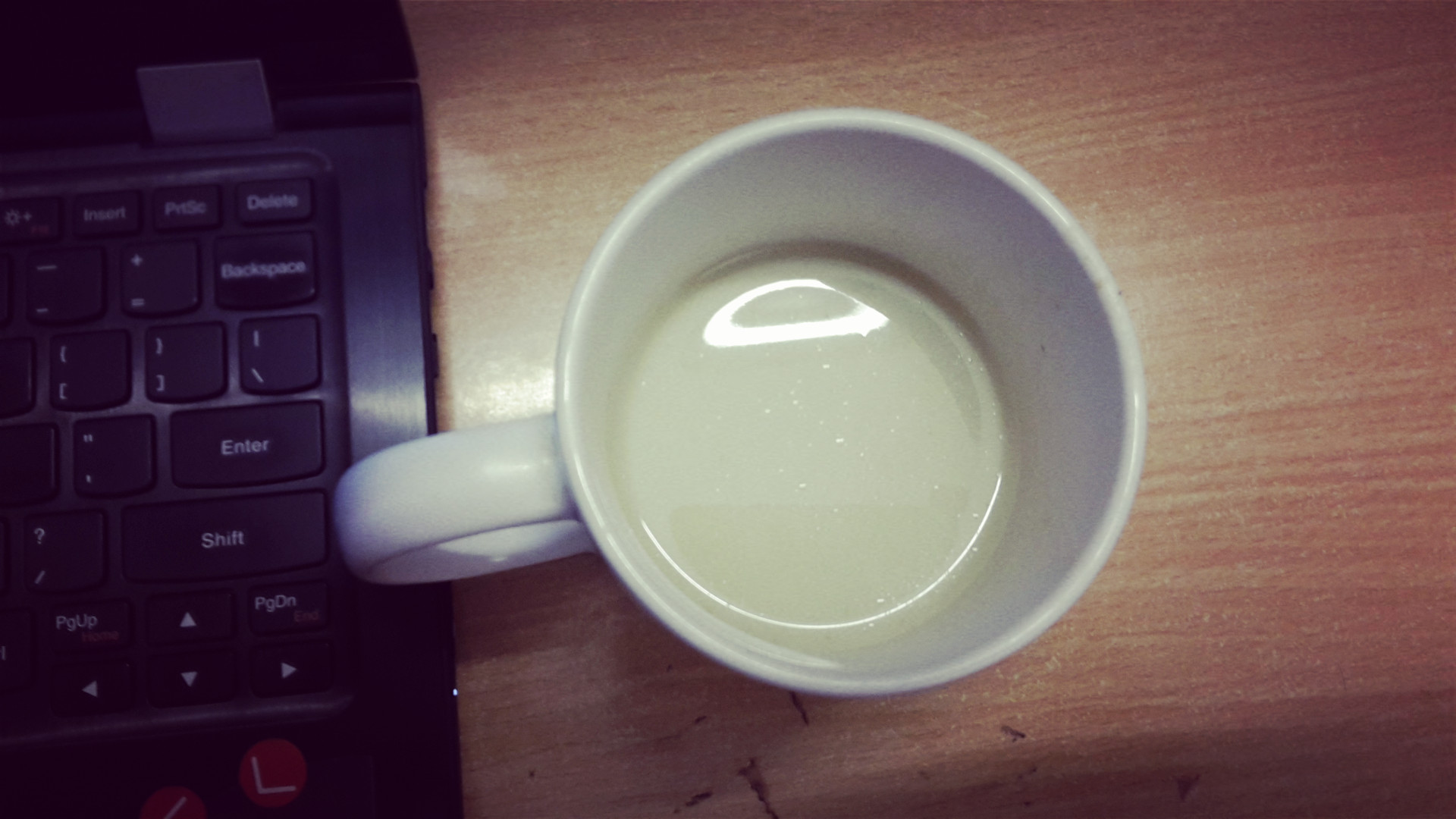For many students who have come to this workshop, this is their first time. Students have come from as far away as Surat – a testament to their commitment to growth and Iyengar yoga. Their enthusiasm is awesome.
The Ultimate Surrender – Intersection of Yoga & Vedanta
May 10, 2023At the beautiful temples of Belur & Halebidu.
The philosophy of yoga and Vedanta sometimes intersect, and I love spotting this overlap in different classes.
During the last RIMYI class I took, Raya spoke about letting go. When we talk about letting go of something, there is an assumption that you’re holding on to something. It’s important to analyse this something. How are you holding on to it? Why are you holding on to it? Once we analyse it, can we let it go?
To make it relevant to the asana practice Raya asked us to ask ourselves what we were feeling in the asana we were holding (Uttanasana). What were we truly feeling? Were we feeling our hamstrings hurting, or was the back hurting, or were we holding the abdomen too tight? When you can identify what you are holding – you can begin to let it go. “I let go of my back, I let go of my abdomen, I let go of….” He asked us to do the same in Sirsasana, but focus on mental conditions/conditionings. He asked: Can letting go be voluntary? Can we actively let go?
He gave us the example of how he came across a ratty old t-shirt when he was cleaning his cupboard. Everyone tells you to let go of this old tee that you don’t even use anymore, but you can’t. We need to understand that it’s not the object that we can’t let go – it’s the memories associated with it that we’re unable to let go.
What are we actually holding on to? Can we analyse that similar to how we analysed Uttansana? Mentioning yoga sutra 1.11 he asked us to ponder over what is the role of memory and cleansing the memory. Can we actively identify and do something about? Letting go of an old t-shirt is easier than letting go of memories. Memories can be good, troublesome, traumatic, ecstatic. How do we deal with this baggage of memories and how does it impact us? Can we let go of attachment to the memory? Can we actively let go of sad memories? Going into parsva sirsasana he asked us to contemplate looking at the memory from a different angle.
अनुभूतविषयासंप्रमोषः स्मृतिः PYS 1.11
Memory is the unmodified recollection of words and experiences.
He spoke about two sutras that he would frequently speak to Guruji about:
सुखानुशयी रागः PYS 2.7
Pleasure leads to desire and emotional attachment.
दुःखानुशयी द्वेषः PYS 2.8
Unhappiness leads to hatred.
A person with a sense of discrimination should strive a balance between sukha and dukha instead of living a the mercy of these two. There are so many triggers in life today – we are all used to certain manners, ways and customs. But can we let go of getting triggered? Raya told us that us to actively open our drawers and pull things out and look at everything that comes out and ask ourselves if we are using it. Have we been keeping certain memories in the cupboard, maybe even in the freezer. And even in the freezer have they become rotten and started stinking? Can we actively bring these memories out, clean them up and throw them away?
How do we throw these memories away? By turning it from klista to aklista.
वृत्तयः पञ्चतय्यः क्लिष्टाक्लिष्टाः PYS 1.5
The movement of consciousness are fivefold. They may be cognizable or non-cognizable, painful (klista) or non-painful (aklista).
The fact that it happened remains, but the feeling associated with it goes. Raya also stressed that we all want happiness, but we remember the sad things more – happiness has a shorter shelf life. Happiness is like camphor or mercury – you can’t hold it, it evaporates.
Next in Sarvangasana, Raya asked us to finally consider what we can let of of intellectually. He spoke of fear and how we’re all fearful of something. But some are able to face their fear because they have practiced handling this fear. Practice analysing your fears and insecurities – once analysed can we let them go? After giving daanam in a temple, we pour water over our hands symbolically ‘washing away’ our attachment with what we’ve given. We need to let go of claiming things – ‘I’ did this, ‘I’ own this etc. The most difficult thing is to let go of this claim. After letting go of these claims, can I let go of the ‘I’ itself?
When one moves from the grossest to the subtlest, neither the beginning is seen nor the end.
My Vedanta teacher always stresses the importance of balance in life. It is important for us to seek pleasure, but also to accept that pleasure and pain come together. As seekers we are encouraged to go after our dreams and desires, but we need to remember that the result of our pursuit depends on many factors. Therefore, we can’t be swayed by victory or defeat, sukham or dukham. We should pursue life according to dharma, and with the best of our physical, emotional and intellectual intent. And surrender the results, fruits, fear and even happiness to a higher purpose.
What is left to surrender when I have surrendered everything?
My teacher explained the idea of surrender using verse 18.66 of the Bhagawad Gita.
सर्वधर्मान्परित्यज्य मामेकं शरणं व्रज |
अहं त्वां सर्वपापेभ्यो मोक्षयिष्यामि मा शुच: ||
In this shloka Lord Krishna is asking Arjuna for the ultimate surrender – the surrender of the ‘I’ or the ego. Letting go of the ‘I’ in all the claims that I make. Once I have surrendered everything, I surrender the ‘I’ too. And in that way I merge with the One, the universal consciousness.

At the Blue Temple, Chiang Rai.
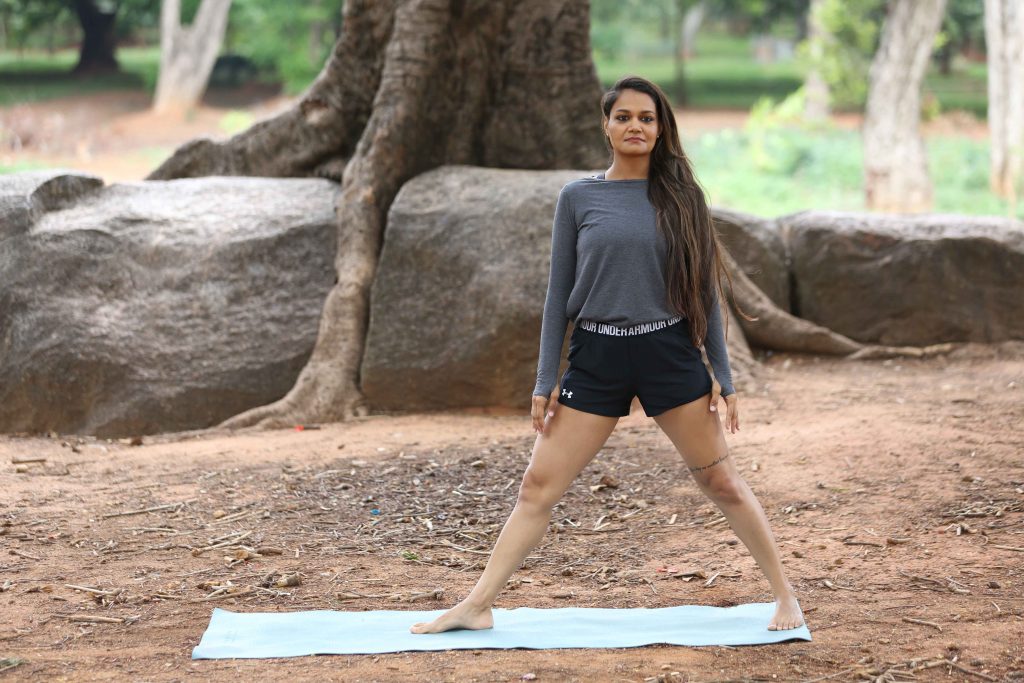
pc: @khan.clicks @deavalin_david_dsouza makeup: makeupbyhennaanbaree location: Cubbon Park
I had a late class yesterday. It started at 7.10 pm and went up to 8.40 pm. The teacher was new to me. After the usual queries (“Where are you from? Who’s your teacher?”) I spread my mat and got ready for a class.
All the teachers at RIMYI have a distinct style of teaching. The strong teacher-student tradition of yoga ensures that your attitude, approach and philosophy towards the practice reflects that of your teacher. Your students will be able to see the ‘Iyengar’ or ‘Ashtanga’ shades in your classes. If you go to multiple teachers/don’t go to any teacher – that is pretty evident too.
There isn’t much of a crowd at RIMYI this year. Last night’s class had about 15 students. We had enough space to spread out. The class was quiet. It wasn’t action-packed or fast paced. We did very few asanas. We held each asana for a very very long time.
As you continue to hold, you’re able to go deeper into the pose. You can intensify the stretch. You can observe which limbs are working, which are sleeping. I worked on lengthening and opening my torso in Trikonasana – I noticed that I could actually activate the hamstrings more. Similarly in Parsvakonasana.
“You may be feeling a stretch in your hamstrings and on your groin,” said the teacher. “But feel the quietness in your abdomen.”
I blinked a couple of times. It’s a mannerism Ive noticed recently. It’s an automatic response if I’m surprised or intrigued.
“Most of us go after the stretch. We think asana works only if we feel the stretch. But all asanas bring quietness in the abdomen too. Find this quiet.”
And with these few sentences, he changed my asana practice forever.
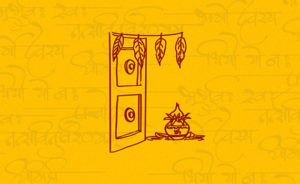 A few weekends ago I attended a friend’s house warming party. In India there is always an element of ritual. So while a housewarming can be a little party for a bunch of close friends, here it becomes an event of larger significance. So a purohit is called. You get the stuff for the puja together, you plan for caterers, you send out invites….
A few weekends ago I attended a friend’s house warming party. In India there is always an element of ritual. So while a housewarming can be a little party for a bunch of close friends, here it becomes an event of larger significance. So a purohit is called. You get the stuff for the puja together, you plan for caterers, you send out invites….
When we celebrate a house warming or a ‘griha pravesh‘ we celebrate new beginnings. We hope that the new abode brings the owners good luck and prosperity. Some incense, a few mantras, a coconut and some ‘lucky’ plants and we actually start to feel better about the house. These are all the accoutrements of the ritual of cleansing a space of any negative vibes so that the new owners can live peacefully.

Big celebrations so dressed to the nines.
A yogi’s abode is the body and mind. Since we get only one body and mind per lifetime, we need to exist within them peacefully and authentically. A yogi is constantly torn between one more drink or slice of pizza and an early morning twists or backbend practice. You control yourself from snapping at a pesky sibling and try to stop fuming at the guy who just cut you off in traffic. But the disturbances in the mind have already been created, and they now impact your being.
How can we maintain equanimity while living in a world designed to trouble us?
The answer lies, as usual, in the practice. Every morning when you step on your mat and start at the beginning, you create a new story. Each day gives you a chance to start at the beginning and go somewhere different. Yesterday’s limitations don’t exist today and today’s won’t exist tomorrow. This impermanence can be a deterrent for many, but for the yogi it means hope. You return to your practice throughout a constantly changing life. You practice life like you practice yoga, with a spirit of exploration and the core belief that this too shall pass.
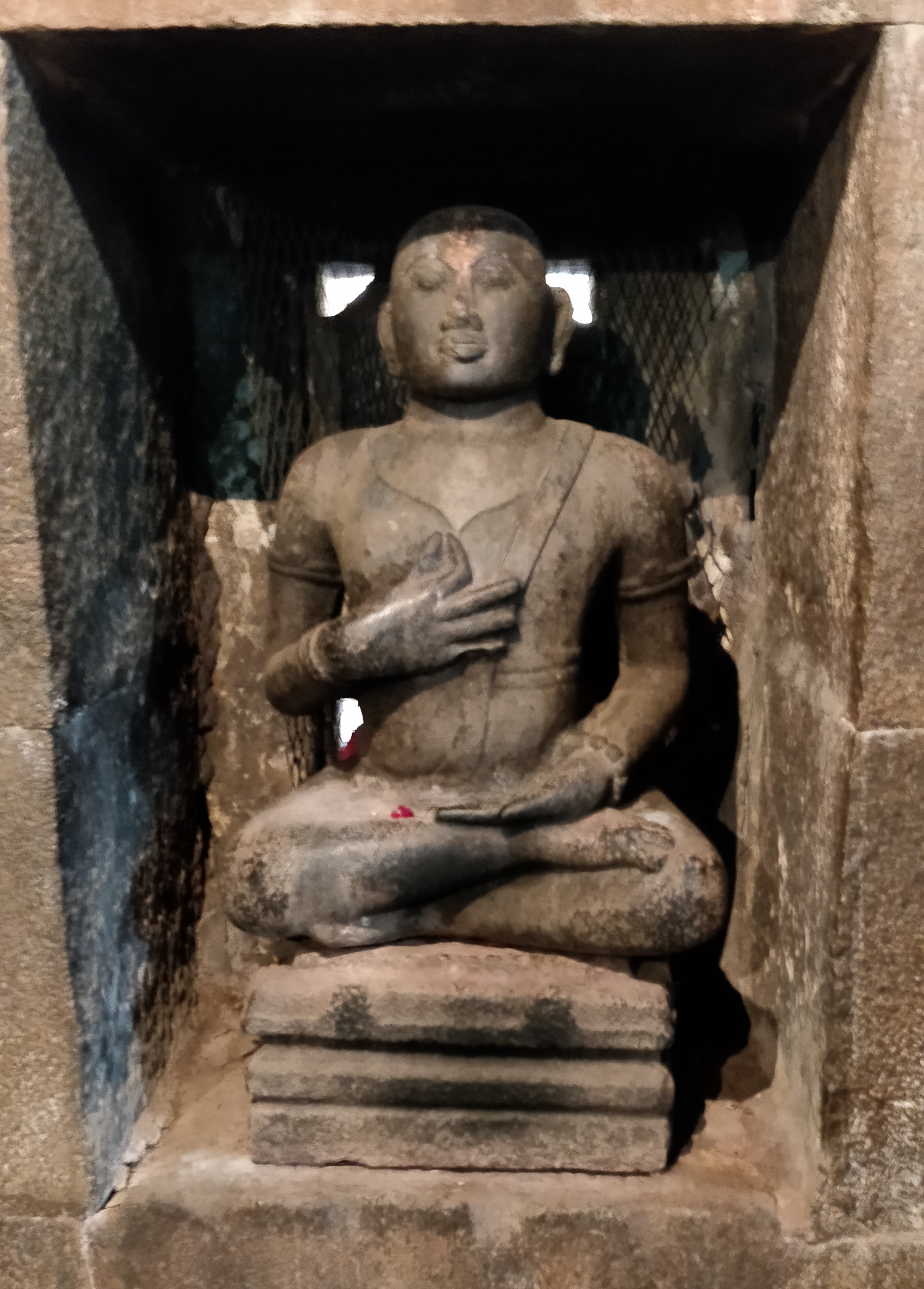
Practice and detachment are the means to still the movements of consciousness. (PYS 1.12) Picture taken at the Bhoga Nandishwara temple at the foot of Nandi Hills.
I’ve practiced more in these 16 days than I ever have in my life. In Mysore practice used to be for an hour and a half. That was for 15 days. During my teachers’ training at SVYASA we used to have practice for up to 2 – 3 hours a day. Here we practice for up to 5 hours a day. Some students even opt to observe classes, so that’s more yoga during the day. It is intense, it is powerful, detailed, thorough and it’s amazing (I may already have mentioned that before.) In the past 2 weeks I’ve had time to really work on my asanas. I’ve also had a chance to see the practice in a different way. To kind of lift the asana lid and peer into the pot to find the importance and relevance of yoga in our lives. My own steadily improving practice and watching all kinds of people practice day in and day out. Doing the Trikonasana (and other asanas) over and over again drives home a few important lessons.
- Practice makes perfect. But nobody’s perfect. So perfection is a process and practice is the means to it. In the age of beautiful Instagram filters, it is difficult to believe that even the jaw dropping and awe inspiring pose has scope for improvement. There is scope of improvement in everything. Your projects are a work in progress. Your relationships are a work in progress….your life is a work in progress. You are a work in progress! So accept your mistakes. Internalize the lessons they teach you and don’t make them again. Remember, a mistake made over and over again is a habit.
- Spend a lot of time on your fundamentals. Here we have practitioners of all levels. However, what we practice day in and day out (yes for 5 hours daily) are the fundamentals. Trikonasana, Uttanasana, Downward dog etc. The other day the entire 2 hour class was about Uttanasana. That is all we did during the entire class. In fact, I’ve heard Abhijata say that your inversions will never be stable unless your standing poses are stable. Next time you find yourself fumbling in a pose, try and analyse why and what you can do to make the pose better. And next time you find yourself getting impatient or bored of the fundamentals, remember there’s always scope for improvement.
- Cultivate discipline.Be strict with yourself because when it comes to your body no one else will be. Make the time to move your body, however inconvenient it may be. Make the time to cultivate a hobby which requires you to move. Enjoy the process of movement and getting in touch with yourself. The tragedy of our times is that people will set reminders on their phones to take the medicines they have now become dependent on, but they won’t throw back the covers and go for a quick jog. Every little bit matters, but you need discipline. To start and to stay on track.
[Above: Healthy food choices always. Remember my 80/20 rule.]
 I met Louise in Wellington, when I first started teaching yoga. After a couple of months, I held her up as an example of ‘balance’ to the class. She is in her early 40s, has two beautiful childern, a rocking career, wonderful marriage…and she still found time for her yoga, tennis, hiking, reading etc. The credit for making her life so rich and full goes to no one but Louise. After all, she could also sit back and complain that she had wanted a career/tennis/amazing body/(fill in the blank) but had to give it up because of: children are too small/husband has a transferrable and demanding job/has other familial obligations/(fill in the blank). Granted Louise comes from a culture and country different from 95% of my students, and many who are reading this are thinking “well you know in our culture (fill in all the perceived limiting factors of being a married woman with kids in India)”.
I met Louise in Wellington, when I first started teaching yoga. After a couple of months, I held her up as an example of ‘balance’ to the class. She is in her early 40s, has two beautiful childern, a rocking career, wonderful marriage…and she still found time for her yoga, tennis, hiking, reading etc. The credit for making her life so rich and full goes to no one but Louise. After all, she could also sit back and complain that she had wanted a career/tennis/amazing body/(fill in the blank) but had to give it up because of: children are too small/husband has a transferrable and demanding job/has other familial obligations/(fill in the blank). Granted Louise comes from a culture and country different from 95% of my students, and many who are reading this are thinking “well you know in our culture (fill in all the perceived limiting factors of being a married woman with kids in India)”.
Now I have an example of an Indian woman (yes, married to a man who has a demanding and transferrable job; yes, has two  growing children who demand/want time/attention; yes, has all the familial obligations that come with being from our culture) who reminds me of Louise. Sharmishta Vardhan has been regular in my class from Day 1. When I got to know her better, I found out that she’s a Bharatnatyam dancer. When there’s no yoga she goes for a walk. She’s an amazing swimmer and has been swimming since she was 8 years old. (Incidentally, she taught me how to swim within 10 days. I’m confident standing on my head on land, but 10 days ago I would list drowning as my biggest fear.) Here’s an Indian woman, in her 40s, married for 9 years, two crazily energetic boys (I’ve seen them in the pool), who defies the ‘Indian woman married with two kids’ convention. She reads, sometimes travels to pursue her hobbies, gets in her daily swim before heading home for dinner, cultivates her own friends circle with whom she goes for movies, exhibitions, fairs etc. You can see the results of daily yoga in her before-after.
growing children who demand/want time/attention; yes, has all the familial obligations that come with being from our culture) who reminds me of Louise. Sharmishta Vardhan has been regular in my class from Day 1. When I got to know her better, I found out that she’s a Bharatnatyam dancer. When there’s no yoga she goes for a walk. She’s an amazing swimmer and has been swimming since she was 8 years old. (Incidentally, she taught me how to swim within 10 days. I’m confident standing on my head on land, but 10 days ago I would list drowning as my biggest fear.) Here’s an Indian woman, in her 40s, married for 9 years, two crazily energetic boys (I’ve seen them in the pool), who defies the ‘Indian woman married with two kids’ convention. She reads, sometimes travels to pursue her hobbies, gets in her daily swim before heading home for dinner, cultivates her own friends circle with whom she goes for movies, exhibitions, fairs etc. You can see the results of daily yoga in her before-after.
 So next time you think you don’t have time for yoga remember that there are women like Louise and Sharmishta who are busy living the lives they love, and making time for yoga as well! 🙂
So next time you think you don’t have time for yoga remember that there are women like Louise and Sharmishta who are busy living the lives they love, and making time for yoga as well! 🙂
Janu Sirshasana (Head to Knee Pose)
How To:
- Sit with both legs spread out in front of you. Make sure you’re balanced on your buttocks with your feet together and your toes pointing upwards.
- Start with the left leg. Bend it at the knee and bring your foot as close to the groin region as possible. Make sure the sole of your foot is parallel to the right thigh. Also make sure the left knee is on the floor and not floating in the air.
- Inhale at this position.
- Now exhaling start to reach out to grasp your toes. Don’t worry if you are unable to grab your toes. Make sure not to curve your back. Imagine that your spine is extending upwards towards the ceiling and you need to work on making your back concave so that your chest is slightly outwards. You want to aim at getting your abdomen on the thigh.
- Go as far forward as is comfortable and breathe for some time in this pose.
- Once you’re comfortable take your awareness to your torso. You want to try to bring the left side of your body close to the right leg and the right side a little away from the leg.
- Make sure not to hunch your shoulders. Throw your shoulders back.
- Inhale as you come up.
- Repeat on the left side.
Variations
- If you’re unable to grab your toes you can also use a belt. String the belt around the balls of your feet to ensure that your toes continue to point upwards as you come down.
- If the knee of the folded leg doesn’t touch the floor, you can place a cushion or a folded blanket under it.
- Pregnant women should practice this only until the second trimester.
Benefits
- Great stretch for your back, legs and shoulders.
- Increases flexibility of the hip joint.
- Massages the kidneys, spleen, pancreas and liver, thereby stimulating their functioning and helping to detoxify the system.
- Stimulates digestion by massaging the abdominal organs and the pelvic region.
- Relieves menstrual pain.
- Eases the effects of stress, tension and strain on your body and relaxes the mind.
- Helps in promoting good posture by correcting the curvature of the spine.
- Helps in alleviating depression and anxiety because it tones and massages the adrenal glands.
- Great to alleviate fatigue.
- Can help in treating symptoms of high blood pressure and insomnia.
Contraindications
- Practice with caution if you have asthma or diarrhoea.
- Practice with caution if you have slipped disc, sciatica or hernia.
“And I’ll tell you something else,” my friend said conspiratorially, “Yoga has become fashionable now.”
Yes, in recent years people have started to frequent more yoga classes, yoga has gone mainstream and what with Nike and Reebok coming up with yoga apparel, yoga has caught our collective attention spans in a big way.
Yes, but what is making yoga fashionable? It’s an age old science, it’s a lifestyle, it’s a way of life…but the masses aren’t going into sanyas. What the masses are doing is paying their local yoga studios/yoga teachers/gurus hard earned money for an hour, sometimes hour and a half of various sequence of poses. And yes, they are reaping the benefits. Everyone does yoga, from my maid to the CEO of your company. And they have all contributed to the fashion statement that is yoga. I thought about all the yoga practitioners I’ve come across so far and came up with a few categories of new age yogis:
1. The first and foremost: The Constipated Yogi. Matsya-asana ensures that their digestive systems are unclogged, but not so for their attitude. Quick to look down upon the ‘unreal’ practitioners (i.e. anyone who doesn’t bow down before a guru they recognize to those who do yoga to lose weight) these yogis will direct their cool gaze towards you and expostulate at length about why they follow who they do and why that is the One True Yoga Path. Before you can contribute your two cents to the conversation to tell them you like nothing better than starting your day sweating it out in a Hot Yoga or Power Yoga class, they let you know their not so positive opinion of these unauthentic/new/commercialized forms of yoga, vehemently and in no uncertain terms. Before you can take a deep breath, they embark upon a detailed rant about the corruption of yoga at the hands of the vast majority of commercial yoga studios. When you’re in this situation, I suggest practice your deep breaths, clear your mind because The Constipated Yogi isn’t really interested in anything you have to say. You see, they know what real yoga is.
2. The Eternal Sunshine Yogi. These yogis are leftovers from the 70s. A lot of them are following the path their parents trod in the 70s….many of them still in Birkenstocks or flip flops. You’ll see them in diaphanous kurtas, sipping vegan chai with a somewhat vacant (spaced out?) look in their eyes. Lord Shiva used ganja as an aphrodisiac they are quick to tell you, and know their Ganesh from Govardhan. Assimilating as much of the culture as possible, you’ll see them wearing bindis, rudraksha malas around their necks and a beatific smile on their lips. You see, the Eternal Sunshine Yogis are on a quest to spread peace and happiness worldwide, and they will do so one Namaste at a time
3. The All-That-Brawn Yogi. Erstwhile gym rats, they can plank better than the best of us. Plus, they are faster, stronger, fitter than you. You can tell by the perfectly sculpted muscles under their expensive, dry-fit, ribbed, breathable body con workout gear. Or better yet, they will drop down and do 108 Surya Namaskars for you even before you can say yo-ga.
4. The Social Yogi – These yogis are the centre of attention of the yoga class….or any of the other numerous classes/causes they are a part of. There’s not a person they don’t know in the class, usually because they take it upon themselves to welcome newcomers…and to increase their circle of influence. They are easy to spot – they are loud, exuberant, gregarious, forthcoming…and get withering looks from the Constipated Yogi because…well because they know that the Social Yogi is not the real thing. But the Social Yogi couldn’t care less, they are too busy bonding with the Eternal Sunshine Yogi.
These are my observations so far. What are the yogis you’ve observed?

